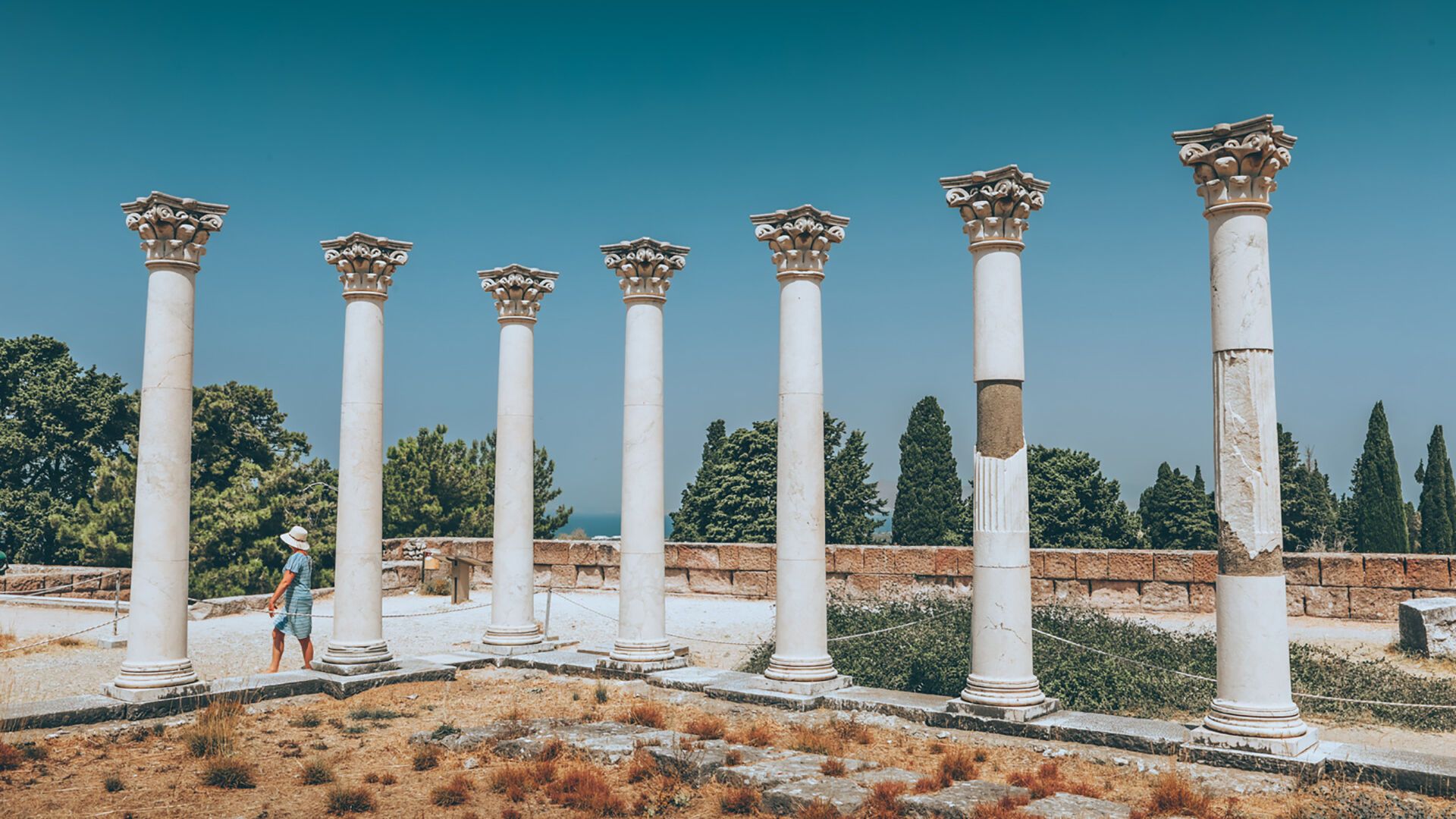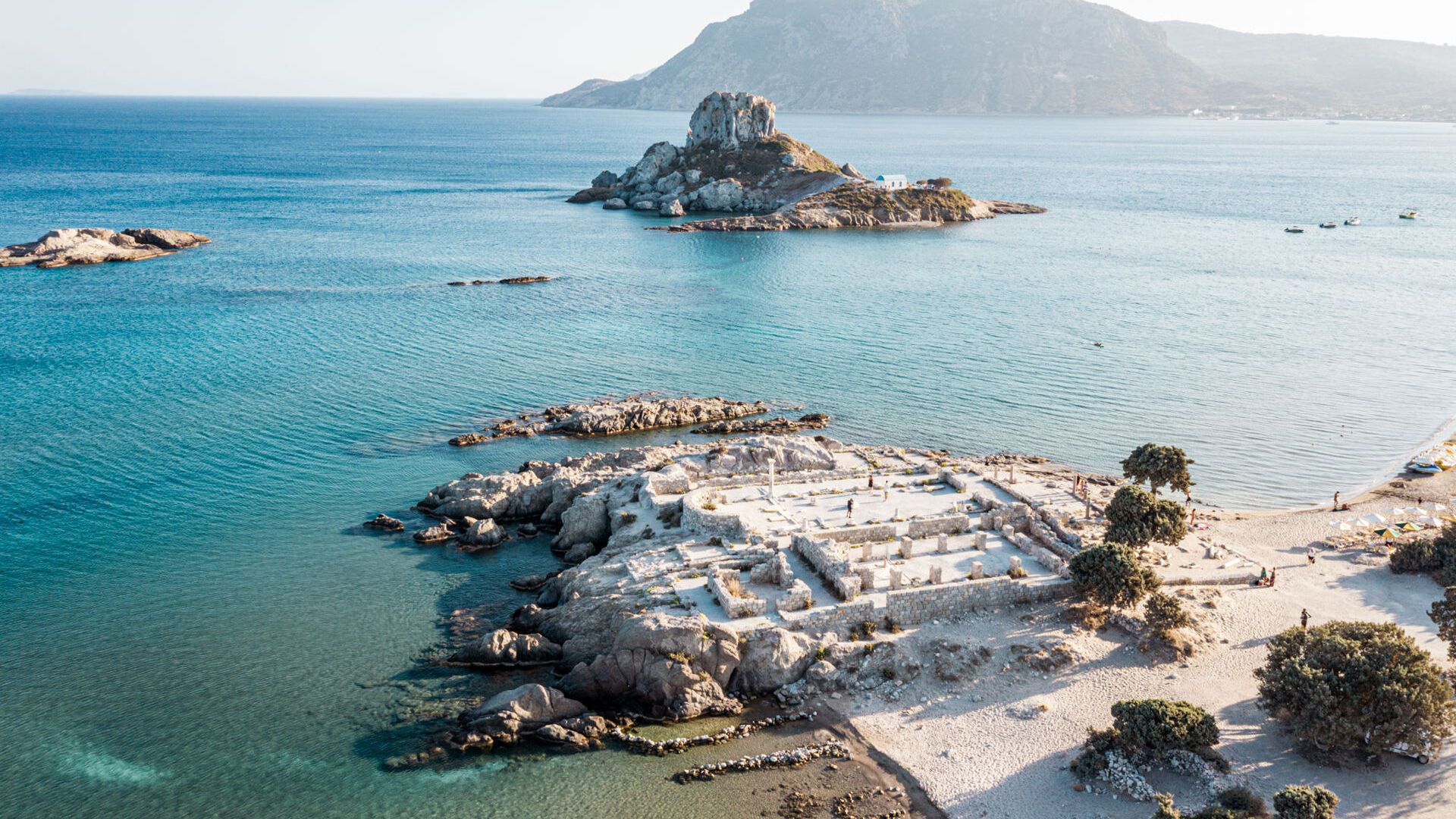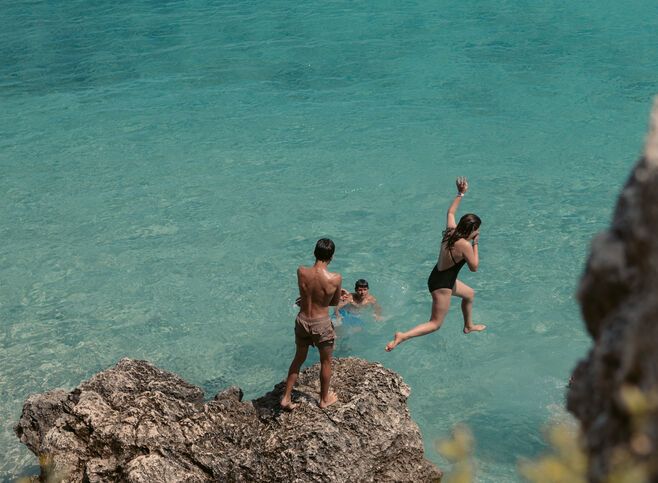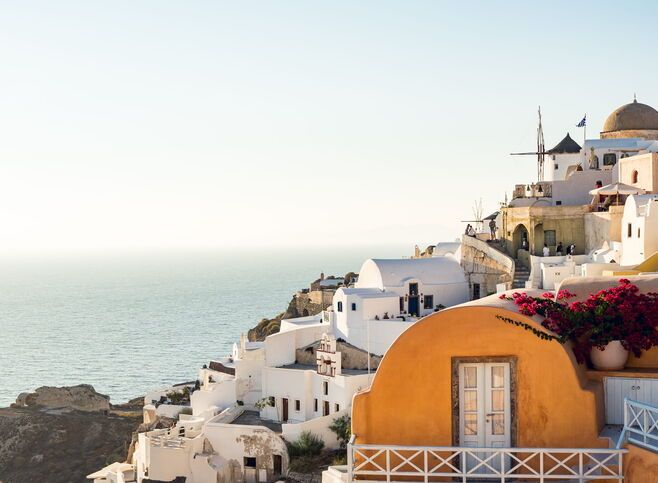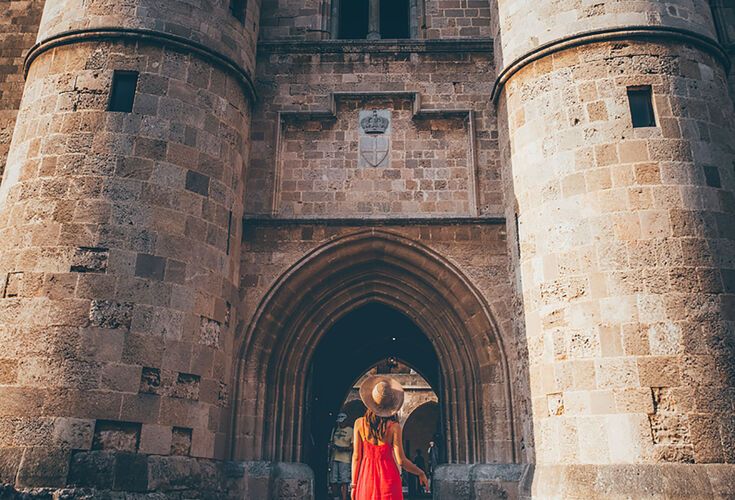- Places to go
- Things to do
- Book your trip
- Get Inspired
- More
- BACK
-
-
To borrow from the famous American motivators, Canfield and Hansen, Kos truly is ‘chicken soup for the soul’, as well as the body and the eye. Tall palm trees, endless sandy beaches, alternating landscapes and numerous archaeological sites and attractions left by ancient Greeks, Romans, medieval knights, Venetians and Ottomans make Kos more than just a pretty face in the Dodecanese island chain. It isn’t coincidental that Hippocrates, antiquity’s most noted physician (he of the oath), was born on Kos.
Whichever you choose of the aliases Kos has gone by – Meropi, Nymphaia or Karys – this fascinating island in the Aegean will be a prominent entry in your holiday diary from now on.
Just 4km northwest of Kos town, on a verdant hill with a spectacular view, you’ll discover one of Greece’s most important archaeological sites, the Asclepion of Kos. A holistic healing centre, the Asclepeion contained infirmaries, temples, hot springs, hostels, a school for physicians and much more. In the 3rd and 2nd century BC, it became one of the important institutions of its kind in the ancient world, following guidelines set down by Kos’ native son Hippocrates, the father of modern medicine. It’s worth making time during your holiday to Kos to visit it.
Feel the healing energy of the Asclepion of Kos
Following a major earthquake in 1933, Kos town was redesigned by the reigning Italians with large squares, sidewalks and wide tree-lined streets, flanked by modern buildings with shops, cafes and restaurants. That said, history buffs will also love this place.
What other modern town can claim so many attractions like the Nerantzia Castle of the Knights of Saint John, late 14th-century walls hastily erected to keep out Sultan Bayezit I, an ancient Greek agora, a medieval district, an old harbour, and Roman ruins in the west? Don’t forget to pay your respects to Hippocrates’ huge plane tree – 12m in circumference and a landmark of Kos. But by fair the best way to enjoy all of the above, is on a bicycle tour of Kos town.
It feels like almost every beach on Kos is a kilometre long. You’ll probably develop a soft spot for Kardamena beach, with its glorious scenery and deep blue water, but don’t miss Agios Stefanos beach, Mastihari, Tigkaki, Marmari, Chrysi Akti, Kefalos and Paradise.
A splash of culture at Agios Stefanos beach
In June 1457, this castle was besieged by 16,000 Ottomans. Just 15 knights and 200 locals were left to defend it, but they held out for 23 days and the Ottomans eventually withdrew. Built by the Knights of Saint John in the 14th century, it is now a peaceful but impressive ruin on Kos.
Kos is an island full of surprises. Planted by Italians in the 1940s, the woods at Plaka, near Antimacheia, have become a sanctuary for peacocks and other birds. Carry some seeds to offer and they’ll be eating out of your hand.
Unique among the Dodecanese islands, Kos has three different kinds of mineral water springs – hot, warm and cool. You’ll find them at Agios Fokas, Piso Thermes, Kokkinonero and Volkanous. Kokkinonero means Redwater.
You’ll find the Archaeological Museum of Kos in Eleftheria Square in town. A larger-than-life head of the goddess Hera greets you in the vestibule while impressive statues and mosaics await within.
















